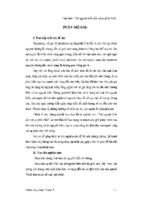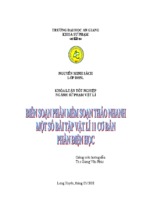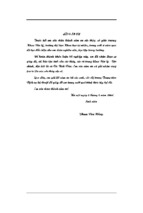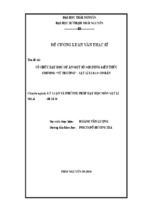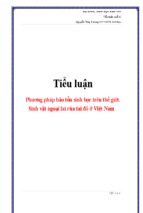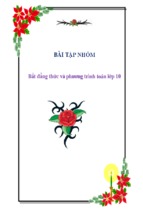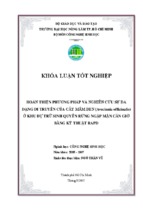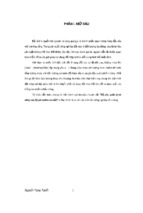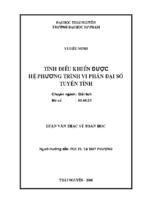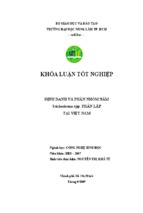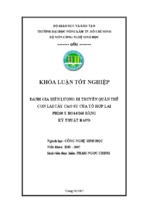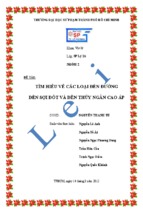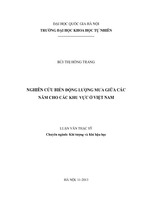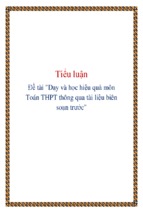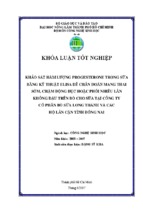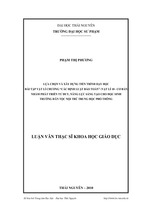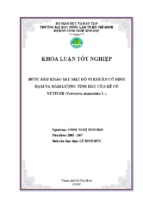Ministero dei Trasporti e
della Navigazione
COMANDO GENERALE DEL CORPO DELLE CAPITANERIE DI PORTO
International Convention
On Load Lines, 1966
including
Protocol of 1988 relating to the Load
Lines Convention, 1966
-
Comando Generale del Corpo delle Capitanerie di Porto –
- 6° Reparto – Sicurezza della Navigazione-
1
INTERNATIONAL CONFERENCE ON LOAD LINES, 1966 including
PROTOCOL OF 1988
The Contracting Governments, Desiring to establish uniform principles and rules with respect to
the limits to which ships on international voyages may be loaded having regard to the need for
safeguarding life and property at sea; CONSIDERING that this end may best be achieved by
conclusion of a Convention; HAVE AGREED as follows:
Article 1
General Obligation under the Convention
(1) The Contracting Governments undertake to give effect to the provisions of the present
Convention and the Annexes hereto, which shall constitute an integral part of the present
Convention. Every reference to the present Convention constitutes at the same time a reference
to the Annexes.
(2) The Contracting Governments shall undertake all measures which may be necessary to give
effect to the present Convention.
Article 2
Definitions
For the purpose of the present Convention, unless expressly provided otherwise:
(1) "Regulations" means the Regulations annexed to the present Convention.
(2) "Administration" means the Government of the State whose flag the ship is flying.
(3) "Approved" means approved by the Administration.
(4) "International voyage" means a sea voyage from a country to which the present Convention
applies to a port outside such country, or conversely. For this purpose, every territory for the
international relations of which a Contracting Government is responsible or for which the
United Nations are the administering authority is regarded as a separate country.
(5) A "fishing vessel" is a ship used for catching fish, whales, seals, walrus or other living
resources of the sea.
(6) "New ship" means a ship the keel of which is laid, or which is at a similar stage of construction,
on or after the date of coming into force of the present Convention for each Contracting
Government.
(7) "Existing ship" means a ship which is not a new ship.
(8) “Length' means 96% of the total length on a waterline at 85% of the least moulded depth
measured from the top of the keel, or the length from the fore-side of the stem to the axis of the
-
Comando Generale del Corpo delle Capitanerie di Porto –
- 6° Reparto – Sicurezza della Navigazione-
2
rudder stock on that waterline, if that be greater. Where the stem contour is concave above the
waterline at 85% of the least moulded depth, both the forward terminal of the total length and
the fore-side of the stem respectively shall be taken at the vertical projection to that waterline of
the aftermost point of the stem contour (above that waterline). In ships designed with a rake of
keel the waterline on which this length is measured shall be parallel to the designed waterline."
(9) `Anniversary date' means the day and the month of each year which will correspond to the date
of expiry of the relevant certificate.
Article 3
General Provisions
(1) No ship to which the present Convention applies shall proceed to sea on an international
voyage after the date on which the present Convention comes into force unless it has been
surveyed, marked and provided with an International Load Line Certificate or, where
appropriate, an International Load Line Exemption Certificate in accordance with the
provisions of the present Convention.
(2) Nothing in this Convention shall prevent an Administration from assigning a greater freeboard
than the minimum freeboard determined in accordance with Annex 1.
Article 4
Application
(1) The present Convention shall apply to:
(a) ships registered in countries the Governments of which are Contracting Governments;
(b) ships registered in territories to which the present Convention is extended under Article 32;
and
(c) unregistered ships flying the flag of a State, the Government of which is a Contracting
Government.
(2) The present Convention shall apply to ships engaged on international voyages.
(3) The regulations contained in Annex I, unless expressly provided otherwise, are applicable to
new ships.
(4) Existing ships which do not fully comply with the requirements of the Regulations contained in
Annex I or any part thereof shall meet at least such lesser related requirements as the
Administration applied to ships on international voyages prior to the coming into force of the
present Convention; in no case shall such ships be required to increase their freeboards. In
order to take advantage of any reduction in freeboard from that previously assigned, existing
ships shall comply with all the requirements of the present Convention.
(5) The Regulations contained in Annex II are applicable to new and existing ships to which the
present Convention applies.
-
Comando Generale del Corpo delle Capitanerie di Porto –
- 6° Reparto – Sicurezza della Navigazione-
3
Article 5
Exceptions
(1) The present Convention shall not apply to:
(a)
(b)
(c)
(d)
(e)
ships of war;
new ships of less than 24 metres (79 feet) in length;
existing ships of less than 150 tons gross;
pleasure yachts not engaged in trade;
fishing vessels.
(2) Nothing herein shall apply to ships solely navigating:
(a) the Great Lakes of North America and the River St. Lawrence as far east as a rhumb line
drawn from Cap des Rosiers to West Point, Anticosti Island, and, on the north side of
Anticosti Island, the meridian of longitude 63°W;
(b) the Caspian Sea;
(c) the Plate, Parana and Uruguay Rivers as far east as a rhumb line drawn between Punta Rasa
(Cabo San Antonio), Argentina, and Punta del Este, Uruguay.
Article 6
Exemptions
(1) Ships when engaged on international voyages between the near neighbouring ports of two or
more States may be exempted by the Administration from the provisions of the present
Convention, so long as they shall remain engaged on such voyages, if the Governments of the
States in which such ports are situated shall be satisfied that the sheltered nature or conditions
of such voyages between such ports make it unreasonable or impracticable to apply the
provisions of the present Convention to ships engaged on such voyages.
(2) The Administration may exempt any ship which embodies features of a novel kind from any of
the provisions of this Convention the application of which might seriously impede research into
the development of such features and their incorporation in ships engaged on international
voyages. Any such ship shall, however, comply with safety requirements, which, in the opinion
of that Administration, are adequate for the service for which it is intended and are such as to
ensure the overall safety of the ship and which are acceptable to the Governments of the States
to be visited by the ship.
(3) The Administration which allows any exemption under paragraphs (1) and (2) of this Article
shall communicate to the Inter-Governmental Maritime Consultative Organization (hereinafter
called the Organization) particulars of the same and reasons therefore which the Organization
shall circulate to the Contracting Governments for their information.
(4) A ship which is not normally engaged on international voyages but which, in exceptional
circumstances, is required to undertake a single international voyage may be exempted by the
Administration from any of the requirements of the present Convention, provided that it
complies with safety requirements which, in the opinion of that Administration, are adequate
for the voyage which is to be undertaken by the ship.
-
Comando Generale del Corpo delle Capitanerie di Porto –
- 6° Reparto – Sicurezza della Navigazione-
4
Article 7
Force Majeure
(1) A ship which is not subject to the provisions of the present Convention at the time of its
departure on any voyage shall not become subject to such provisions on account of any
deviation from its intended voyage due to stress of weather or any other cause of force majeure.
(2) In applying the provisions of the present Convention, the Contracting Governments shall give
due consideration to any deviation or delay caused to any ship owing to stress of weather or
any other cause of force majeure.
Article 8
Equivalents
(1) The Administration may allow any fitting, material, appliance or apparatus to be fitted, or any
other provision to be made in a ship, other than that required by the present Convention, if it is
satisfied by trial thereof or otherwise that such fitting, material, appliance or apparatus, or
provision, is at least as effective as that required by the Convention.
(2) The Administration which allows a fitting, material, appliance or apparatus, or provision, other
than that required by the present Convention, shall communicate to the Organization for
circulation to the Contracting Governments particulars thereof, together with a report on any
trials made.
Article 9
Approvals for Experimental Purposes
(1) Nothing in the present Convention shall prevent an Administration from making specific
approvals for experimental purposes in respect of a ship to which the Convention applies.
(2) An Administration which makes any such approval shall communicate to the Organization for
circulation to the Contracting Governments particulars thereof.
Article 10
Repairs, Alterations and Modifications
(1) A ship which undergoes repairs, alterations, modifications and outfitting related thereto shall
continue to comply with at least the requirements previously applicable to the ship. An existing
ship in such a case shall not, as a rule, comply to a lesser extent with the requirements for a new
ship than it did before.
(2) Repairs, alterations and modifications of a major character and outfitting related thereto should
meet the requirements for a new ship in so far as the Administration deems reasonable and
practicable.
Article 11
Zones and Areas
(1) A ship to which the present Convention applies shall comply with the requirements applicable
to that ship in the zones and areas described in Annex II.
-
Comando Generale del Corpo delle Capitanerie di Porto –
- 6° Reparto – Sicurezza della Navigazione-
5
(2) A port standing on the boundary line between two zones or areas shall be regarded as within the
zone or area from or into which the ship arrives or departs.
Article 12
Submersion
(1) Except as provided in paragraphs (2) and (3) of this Article, the appropriate load lines on the
sides of the ship corresponding to the season of the year and the zone or area in which the ship
may be shall not be submerged at any time when the ship puts to sea, during the voyage or on
arrival.
(2) When a ship is in fresh water of unit density the appropriate load line may be submerged by the
amount of the fresh water allowance shown on the International Load Line Certificate. Where
the density is other than unity, an allowance shall be made proportional to the difference
between 1.025 and the actual density.
(3) When a ship departs from a port situated on a river or inland waters, deeper loading shall be
permitted corresponding to the weight of fuel and all other materials required for consumption
between the point of departure and the sea.
Article 13
Survey and Marking
The survey and marking of ships, as regards the enforcement of the provisions of the present
Convention and the granting of exemptions therefrom, shall be carried out by officers of the
Administration. The Administration may, however, entrust the survey and marking either to
surveyors nominated for the purpose or to organizations recognized by it. In every case the
Administration concerned fully guarantees the completeness and efficiency of the survey and
marking.
Article 14
Initial, renewal and inspections
(1) A ship shall be subjected to the surveys specified below:
(a) An initial survey before the ship is put in service, which shall include a complete
inspection of its structure and equipment in so far as the ship is covered by the present
Convention. The survey shall be such as to ensure that the arrangements, materials and
scantlings fully comply with the requirements of the present Convention.
(b) A renewal survey at intervals specified by the Administration but not exceeding five
years, except where paragraphs (2), (5), (6) and (7) of article 19 are applicable, which
shall be such as to ensure that the structure, equipment, arrangements, materials and
scantlings fully comply with the requirements of the present Convention.
(c) An annual survey within 3 months before or after each anniversary date of the certificate
to ensure that:
-
Comando Generale del Corpo delle Capitanerie di Porto –
- 6° Reparto – Sicurezza della Navigazione-
6
(i)
alterations have not been made to the hull or superstructures which would
affect the calculations determining the position of the load line;
(ii)
the fittings and appliances for the protection of openings, guard rails,
freeing ports and means of access to crew's quarters are maintained in an
effective condition;
(iii)
the freeboard marks are correctly and permanently indicated;
(iv)
the information required by regulation 10 is provided.
(2) The annual surveys referred to in paragraph (1)(c) of this article shall be endorsed on the
International Load Line Certificate or the International Load Line Exemption Certificate issued
to a ship exempted under paragraph (2) of article 6 of the present Convention."
Article 15
Maintenance of Conditions after Survey
After any survey of the ship under Article 14 has been completed, no change shall be made in the
structure, equipment, arrangements, material or scantlings covered by the survey, without the
sanction of the Administration.
Article 16
Issue of Certificates
(1) An International Load Line Certificate shall be issued to every ship which has been surveyed
and marked in accordance with the present Convention.
(2) An International Load Line Exemption Certificate shall be issued to any ship to which an
exemption has been granted under and in accordance with paragraph (2) or (4) of Article 6.
(3) Such certificates shall be issued by the Administration or by any person or organization duly
authorized by it. In every case, the Administration assumes full responsibility for the certificate.
(4) Deleted
Article 17
Issue or endorsement of Certificate by another Government
(1) A Contracting Government may at the request of another Contracting Government cause a ship
to be surveyed and, if satisfied that the provisions of the present Convention are complied with,
shall issue or authorize the issue of the International Load Line Certificate to the ship and,
where appropriate, endorse or authorize the endorsement of the certificate on the ship in
accordance with the present Convention.
-
Comando Generale del Corpo delle Capitanerie di Porto –
- 6° Reparto – Sicurezza della Navigazione-
7
(2) A copy of the certificate, a copy of the survey report used for computing the freeboard, and a
copy of the computations shall be transmitted as early as possible to the requesting
Government.
(3) A certificate so issued must contain a statement to the effect that it has been issued at the
request of the Government of the State whose flag the ship is or will be flying and it shall have
the same force and receive the same recognition as a certificate issued under Article 16.
(4) No International Load Line Certificate shall be issued to a ship which is flying the flag of a
State the Government of which is not a Contracting Government.
Article 18
Form of Certificates
The certificates shall be drawn up in the form corresponding to the models given in Annex III to the
present Convention. If the language used is neither English nor French, the text shall include a
translation into one of these languages.
Article 19
Duration and validity of Certificates
(1) An International Load Line Certificate shall be issued for a period specified by the
Administration, which shall not exceed 5 years.
(2)
(a) Notwithstanding the requirements of paragraph (1), when the renewal survey is completed
within 3 months before the expiry date of the existing certificate, the new certificate shall
be valid from the date of completion of the renewal survey to a date not exceeding 5 years
from the date of expiry of the existing certificate.
(b) When the renewal survey is completed after the expiry date of the existing certificate, the
new certificate shall be valid from the date of completion of the renewal survey to a date
not exceeding 5 years from the date of expiry of the existing certificate.
(c) When the renewal survey is completed more than 3 months before the expiry date of the
existing certificate, the new certificate shall be valid from the date of completion of the
renewal survey to a date not exceeding 5 years from the date of completion of the renewal
survey.
(3) If a certificate is issued for a period of less than 5 years, the Administration may extend the
validity of a certificate beyond the expiry date to the maximum period specified in paragraph
(1), provided that the annual surveys referred to in article 14 applicable when a certificate is
issued for a period of 5 years are carried out as appropriate.
(4) If, after the renewal survey referred to in paragraph (1)(b) of article 14, a new certificate cannot
be issued to the ship before the expiry date of the existing certificate, the person or organization
carrying out the survey may extend the validity of the existing certificate for a period which
shall not exceed 5 months. This extension shall be endorsed on the certificate, and shall be
granted only where there have been no alterations in the structure, equipment, arrangements,
materials or scantlings which affect the ship's freeboard.
-
Comando Generale del Corpo delle Capitanerie di Porto –
- 6° Reparto – Sicurezza della Navigazione-
8
(5) If a ship at the time when a certificate expires is not in a port in which it is to be surveyed, the
Administration may extend the period of validity of the certificate but this extension shall be
granted only for the purpose of allowing the ship to complete its voyage to the port in which it is
to be surveyed, and then only in cases where it appears proper and reasonable to do so. No
certificate shall be extended for a period longer than 3 months, and a ship to which an extension
is granted shall not, on its arrival in the port in which it is to be surveyed, be entitled by virtue of
such extension to leave that port without having a new certificate. When the renewal survey is
completed, the new certificate shall be valid to a date not exceeding 5 years from the date of
expiry of the existing certificate before the extension was granted.
(6) A certificate issued to a ship engaged on short voyages which has not been extended under the
foregoing provisions of this article may be extended by the Administration for a period of grace
of up to one month from the date of expiry stated on it. When the renewal survey is completed
the new certificate shall be valid to a date not exceeding 5 years from the date of expiry of the
existing certificate before the extension was granted.
(7) In special circumstances, as determined by the Administration, a new certificate need not be
dated from the date of expiry of the existing certificate as required by paragraphs (2), (5) and
(6). In these special circumstances, the new certificate shall be valid to a date not exceeding 5
years from the date of completion of the renewal survey.
(8) If an annual survey is completed before the period specified in article 14 then:
(a) the anniversary date shown on the certificate shall be amended by endorsement to a date
which shall not be more than 3 months later than the date on which the survey was
completed;
(b) the subsequent annual survey required by article 14 shall be completed at the intervals
prescribed by that article using the new anniversary date;
(c) the expiry date may remain unchanged provided one or more annual surveys are carried
out so that the maximum intervals between the surveys prescribed by article 4 are not
exceeded.
(9) An International Load Line Certificate shall cease to be valid if any of the following
circumstances exist:
(a) material alterations have taken place in the hull or superstructures of the ship such as
would necessitate the assignment of an increased freeboard;
(b) the fittings and appliances mentioned in paragraph (1)(c) of article 14 are not maintained
in an effective condition;
(c) the certificate is not endorsed to show that the ship has been surveyed as provided in
paragraph (1)(c) of article 14;
(d) the structural strength of the ship is lowered to such an extent that the ship is unsafe.
(10)
(a) The duration of an International Load Line Exemption Certificate issued by an
Administration to a ship exempted under paragraph (2) of article 6 shall not exceed 5
years. Such certificate shall be subject to a renewal, endorsement, extension and
cancellation procedure similar to that provided for an International Load Line
Certificate under this article.
-
Comando Generale del Corpo delle Capitanerie di Porto –
- 6° Reparto – Sicurezza della Navigazione-
9
(b) The duration of an International Load Line Exemption Certificate issued to a ship
exempted under paragraph (4) of article 6 shall be limited to the single voyage for
which it is issued.
(11) A certificate issued to a ship by an Administration shall cease to be valid upon the transfer of
such a ship to the flag of another State.
Article 20
Acceptance of Certificates
The certificates issued under the authority of a Contracting Government in accordance with the
present Convention shall be accepted by the other Contracting Governments and regarded for all
purposes covered by the present Convention as having the same force as certificates issued by them.
Article 21
Control
(1)
Ships holding a certificate issued under Article 16 or Article 17 are subject, when in the ports
of other Contracting Governments, to control by officers duly authorized by such
Governments. Contracting Governments shall ensure that such control is exercised as far as is
reasonable and practicable with a view to verifying that there is on board a valid certificate
under the present Convention. If there is a valid International Load Line Certificate on board
the ship, such control shall be limited to the purpose of determining that:
(a) the ship is not loaded beyond the limits allowed by the certificate;
(b) the position of the load line of the ship corresponds with the certificate; and
(c) the ship has not been so materially altered in respect of the matters set out in subparagraphs (a) and (b) paragraph (9) of Article 19 that the ship is manifestl unfit to
proceed to sea without danger to human life.
If there is a valid International Load Line Exemption Certificate on board, such control
shall be limited to the purpose of determining that any conditions stipulated in that
certificate are complied with.
(2)
If such control is exercised under sub-paragraph (c) of paragraph (1) of this Article, it shall
only be exercised in so far as may be necessary to ensure that the ship shall not sail until it can
proceed to sea without danger to the passengers or the crew.
(3)
In the event of the control provided for in this Article giving rise to intervention of any kind,
the officer carrying out the control shall immediately inform in writing the Consul or the
diplomatic representative of the State whose flag the ship is flying of this decision and of all
the circumstances in which intervention was deemed to be necessary.
Article 22
Privileges
The privileges of the present Convention may not be claimed in favour of any ship unless it holds a
valid certificate under the Convention.
-
Comando Generale del Corpo delle Capitanerie di Porto –
- 6° Reparto – Sicurezza della Navigazione-
10
(1)
(2)
Article 23
Casualties
Each Administration undertakes to conduct an investigation of any casualty occurring to ships
for which it is responsible and which are subject to the provisions of the present Convention
when it judges that such an investigation may assist in determining what changes in the
Convention might be desirable.
Each Contracting Government undertakes to supply the Organization with the pertinent
information concerning the findings of such investigations. No reports or recommendations of
the Organization based upon such information shall disclose the identity or nationality of the
ships concerned or in any manner fix or imply responsibility upon any ship or person.
Article 24
Prior Treaties and Conventions
(1)
All other treaties, conventions and arrangements relating to load line matters at present in
force between Governments Parties to the present Convention shall continue to have full and
complete effect during the terms thereof as regards:
(a) ships to which the present Convention does not apply; and
(b) ships to which the present Convention applies, in respect of matters for which it has not
expressly provided.
(2)
To the extent, however, that such treaties, conventions or arrangements conflict with the
provisions of the present Convention, the provisions of the present Convention shall prevail.
Article 25
Special Rules drawn up by Agreement
When in accordance with the present Convention special rules are drawn up by agreement among
all or some of the Contracting Governments, such rules shall be communicated to the Organization
for circulation to all Contracting Governments.
Article 26
Communication of Information
(1) The Contracting Governments undertake to communicate to and deposit with the Organization:
(a) a sufficient number of specimens of their certificates issued under the provisions of the
present Convention for circulation to the Contracting Governments;
(b) the text of the laws, decrees, orders, regulations and other instruments which shall have
been promulgated on the various matters within the scope of the present Convention; and
(c) a list of non-governmental agencies which are authorized to act in their behalf in the
administration of load line matters for circulation to the Contracting Governments.
(2)
Each Contracting Government agrees to make its strength standards available to any other
Contracting Government, upon request.
-
Comando Generale del Corpo delle Capitanerie di Porto –
- 6° Reparto – Sicurezza della Navigazione-
11
Article 27
Signature, Acceptance and Accession
(1)
The present Convention shall remain open for signature for three months from 5 April 1966
and shall thereafter remain open for accession. Governments of States Members of the United
Nations, or of any of the Specialized Agencies, or of the International Atomic Energy
Agency, or parties to the Statute of the International Court of Justice may become parties to
the Convention by:
(a) signature without reservation as to acceptance;
(b) signature subject to acceptance followed by acceptance; or
(c) accession.
(2)
Acceptance or accession shall be effected by the deposit of an instrument of acceptance or
accession with the Organization which shall inform all Governments that have signed the
Convention or acceded to it of each new acceptance or accession and of the date of its deposit.
Article 28
Coming into force
(1) The present Convention shall come into force twelve months after the date on which not less
than fifteen Governments of States, including seven each with not less than one million gross
tons of shipping, have signed without reservation as to acceptance or deposited instruments of
acceptance or accession in accordance with Article 27. The Organization shall inform all
Governments which have signed or acceded to the present Convention of the date on which it
comes into force.
(2) For Governments which have deposited an instrument of acceptance of or accession to the
present Convention during the twelve months mentioned in paragraph (1) of this Article, the
acceptance or accession shall take effect on the coming into force of the present Convention or
three months after the date of deposit of the instrument of acceptance or accession, whichever
is the later date.
(3) For Governments which have deposited an instrument of acceptance of or accession to the
present Convention after the date on which it comes into force, the Convention shall come into
force three months after the date of the deposit of such instrument.
(4) After the date on which all the measures required to bring an amendment to the present
Convention into force have been completed, or all necessary acceptances are deemed to have
been given under sub-paragraph (b) of paragraph (2) of Article 29 in case of amendment by
unanimous acceptance, any instrument of acceptance or accession deposited shall be deemed to
apply to the Convention as amended.
Article 29
Amendments
(1)
The present Convention may be amended by either of the procedures specified in the
following paragraphs.
-
Comando Generale del Corpo delle Capitanerie di Porto –
- 6° Reparto – Sicurezza della Navigazione-
12
(2)
Amendments after consideration within the Organization:
(a) Any amendment proposed by a Contracting Government shall be submitted to the
Secretary-General of the Organization, who shall then circulate it to all Members of the
Organization and all Contracting Governments at least six months prior to its
consideration.
(b) Any amendment proposed and circulated as above shall be referred to the Maritime
Safety Committee of the Organization for consideration.
(c) Contracting Governments of States, whether or not Members of the Organization, shall
be entitled to participate in the proceedings of the Maritime Safety Committee for the
consideration and adoption of amendments.
(d) Amendments shall be adopted by a two-thirds majority of the Contracting Governments
present and voting in the Maritime Safety Committee expanded as provided for in subparagraph (c) of this paragraph (herein- after referred to as "the expanded Maritime
Safety Committee") on condition that at least one-third of the Contracting Governments
shall be present at the time of voting.
(e) Amendments adopted in accordance with sub-paragraph (d) of this paragraph shall be
communicated by the Secretary-General of the Organization to all Contracting
Governments for acceptance.
(f)
(i) An amendment to an Article of the Convention shall be deemed to have been
accepted on the date on which it is accepted by two-thirds of the Contracting
Governments.
(ii) An amendment to an Annex shall be deemed to have been accepted: at the end of two
years from the date on which it is communicated toContracting Governments for
acceptance; or at the end of a different period, which shall not be less than one year, if
so determined at the time of its adoption by a two- thirds majority of the Contracting
Governments present and voting in the expanded Maritime Safety Committee.
However, if within the specified period either more than one-third of Contracting
Governments, or Contracting Governments the combined merchant fleets of which
constitute not less than fifty per cent of the gross tonnage of all the merchant fleets of
all Contracting Governments, notify the Secretary-General of the Organization that
they object to the amendment, it shall be deemed not to have been accepted.
(g)
(i) An amendment to an Article of the Convention shall enter into force with respect to
those Contracting Governments which have accented it, six months after the date on
which it is deemed to have been accepted, and with respect to each Contracting
Government which accepts it after that date, six months after the date of that
Contracting Government's acceptance.
(ii) An amendment to an Annex shall enter into force with respect to all Contracting
Governments, except those which have objected to the amendment under subparagraph (f)(ii) of this paragraph and which have not withdrawn such objections, six
months after the date on which it is deemed to have been accepted. However, before
the date set for entry into force, any Contracting Government may give notice to the
Secretary-General of the Organization that it exempts itself from giving effect to that
amendment for a period not longer than one year from the date of its entry into force,
or for such longer period as may be determined by a two-thirds majority of the
-
Comando Generale del Corpo delle Capitanerie di Porto –
- 6° Reparto – Sicurezza della Navigazione-
13
Contracting Governments present and voting in the expanded Maritime Safety
Committee at the time of the adoption of the amendment.
(3) Amendment by a Conference:
(a) Upon the request of a Contracting Government concurred in by at least one-third of the
Contracting Governments, the Organization shall convene a Conference of Contracting
Governments to consider amendments to the present Convention.
(b) Every amendment adopted by such a Conference by a two-thirds majority of the
Contracting Governments present and voting shall be communicated by the SecretaryGeneral of the Organization to all Contracting Governments for acceptance.
(c) Unless the Conference decides otherwise, the amendment shall be deemed to have been
accepted and shall enter into force in accordance with the procedures specified in subparagraphs (2)(f) and (23(g) respectively of this Article, provided that references in these
paragraphs to the expanded Maritime Safety Committee shall be taken to mean references
to the Conference.
(4)
(a) A Contracting Government which has accepted an amendment to an Annex which has
entered into force shall not be obliged to extend the benefit of the present Convention in
respect of the certificates issued to a ship entitled to fly the flag of a State the
Government of which, pursuant to the provisions of sub-paragraph 12)(f)(ii) of this
Article, has objected to the amendment and has not withdrawn such an objection, but
only to the extent that such certificate relate to matters covered by the amendment in
question.
(b) A Contracting Government which has accepted an amendment to an Annex which has
entered into force shall extend the benefit of the present Convention in respect of the
certificates issued to a ship entitled to fly the flag of a State the Government of which,
pursuant to the provisions of sub-paragraph (2)(g)(ii) of this Article, has notified the
Secretary-General of the Organization that it exempts itself from giving effect to the
amendment.
(5)
Unless expressly provided otherwise, any amendment to the present Convention made under
this Article, which relates to the structure of a ship, shall apply only to ships the keels of
which are laid or which are at a similar stage of construction, on or after the date on which the
amendment enters into force.
(6)
Any declaration of acceptance of, or objection to, an amendment or any notice given under
sub-paragraph (2)(g)(ii) of this Article shall be submitted in writing to the Secretary-General
of the Organization, who shall inform all Contracting Governments of any such submission
and the date of its receipt.
(7)
The Secretary-General of the Organization shall inform all Contracting Governments of any
amendments which enter into force under this Article, together with the date on which each
such amendment enters into force."
-
Comando Generale del Corpo delle Capitanerie di Porto –
- 6° Reparto – Sicurezza della Navigazione-
14
Article 30
Denunciation
(1)
The present Convention may be denounced by any Contracting Government at any time after
the expiry of five years from the date on which the Convention comes into force for that
Government.
(2)
Denunciation shall be effected by a notification in writing addressed to the Organization
which shall inform all the other Contracting Governments of any such notification received
and of the date of its receipt.
(3)
A denunciation shall take effect one year, or such longer period as may be specified in the
notification, after its receipt by the Organization.
Article 31
Suspension
(1)
In case of hostilities or other extraordinary circumstances which affect the vital interests of a
State the Government of which is a Contracting Government, that Government may suspend
the operation of the whole or any part of the present Convention. The suspending Government
shall immediately give notice of any such suspension to the Organization.
(2)
Such suspension shall not deprive other Contracting Governments of any right of control
under the present Convention over the ships of the suspending Government when such ships
are within their ports.
(3)
The suspending Government may at any time terminate such suspension and shall
immediately give notice of such termination to the Organization.
(4)
The Organization shall notify all Contracting Governments of any suspension or termination
of suspension under this Article.
Article 32
Territories
(1)
(a) The United Nations, in cases where they are the administering authority for a territory, or
any Contracting Government responsible for the international relations of a territory,
shall as soon as possible consult with such territory in an endeavour to extend the present
Convention to that territory and may at any time by notification in writing to the
Organization declare that the present Convention shall extend to such territory.
(b) The present Convention shall, from the date of the receipt of the notification or from such
other date as may be specified in the notification, extend to the territory named therein.
(2)
(a) The United Nations, or any Contracting Government which has made a declaration under
sub-paragraph (a) of paragraph (1) of this Article, at any time after the expiry of a period
of five years from the date on which the Convention has been so extended to any
-
Comando Generale del Corpo delle Capitanerie di Porto –
- 6° Reparto – Sicurezza della Navigazione-
15
territory, may by notification in writing to the Organization declare that the present
Convention shall cease to extend to any such territory named in the notification.
(b) The present Convention shall cease to extend to any territory mentioned in such
notification one year, or such longer period as may be specified therein, after the date of
receipt of the notification by the Organization.
(3)
The Organization shall inform all the Contracting Governments of the extension of the present
Convention to any territories under paragraph (1) of this Article, and of the termination of any
such extension under the provisions of paragraph (2), stating in each case the date from which
the present Convention has been or will cease to be so extended.
Article 33
Registration
(1)
The present Convention shall be deposited with the Organization and the Secretary-General of
the Organization shall transmit certified true copies thereof to all Signatory Governments and
to all Governments which accede to the present Convention.
(3) As soon as the present Convention comes into force it shall be registered by the Organization in
accordance with Article 102 of the Charter of the United Nations.
Article 34
Languages
The present Convention is established in a single copy in the English and French languages, both
texts being equally authentic. Official translations in the Russian and Spanish languages shall be
prepared and deposited with the signed original.
-
Comando Generale del Corpo delle Capitanerie di Porto –
- 6° Reparto – Sicurezza della Navigazione-
16
INTERNATIONAL CONFERENCE ON LOAD LINES, 1966
including PROTOCOL of 1988
ANNEX I REGULATIONS FOR DETERMINING LOAD LINES
CHAPTER I GENERAL
The Regulations assume that the nature and stowage of the cargo, ballast, etc., are such as to secure
sufficient stability of the ship and the avoidance of excessive structural stress.
The Regulations also assume that where there are international requirements relating to stability or
subdivision, these requirements have been complied with.
Regulation 1
Strength of Ship
The Administration shall satisfy itself that the general structural strength of the ship is sufficient for
the draught corresponding to the freeboard assigned. Ships built and maintained in conformity with
the requirements of a classification society recognized by the Administration may be considered to
possess adequate strength.
Regulation 2
Application
(1) Ships with mechanical means of propulsion or lighters, barges or other ships without
independent means of propulsion, shall be assigned freeboards in accordance with the provisions
of Regulations 1-40 inclusive of this Annex.
(2) Ships carrying timber deck cargoes may be assigned, in addition to the freeboards prescribed in
paragraph (1) of this Regulation, timber freeboards in accordance with the provisions of
Regulations 41-45 inclusive of this Annex.
(3) Ships designed to carry sail, whether as the sole means of propulsion or as a supplementary
means, and tugs, shall be assigned freeboards in accordance with the provisions of Regulations
1-40 inclusive of this Annex. Such additional freeboard shall be required as determined by the
Administration.
(4) Ships of wood or of composite construction, or of other materials the use of which the
Administration has approved, or ships whose constructional features are such as to render the
application of the provisions of this Annex unreasonable or impracticable, shall be assigned
freeboards as determined by the Administration.
(5) Regulations 10-26 inclusive of this Annex shall apply to every ship to which a minimum
freeboard is assigned. Relaxations from these requirements may be granted to a ship to which a
greater than minimum freeboard is assigned on condition that the Administration is satisfied
with the safety conditions provided.
-
Comando Generale del Corpo delle Capitanerie di Porto –
- 6° Reparto – Sicurezza della Navigazione-
17
(6) Regulation 22(2) and regulation 27 shall apply only to ships the keels of which are laid or which
are at a similar stage of construction on or after the date on which the Protocol of 1988 Relating
to the International Convention on Load Lines, 1966 enters into force.
(7) New ships, other than those specified in paragraph (6), shall comply either with regulation 27 of
the present Convention (as amended) or with regulation 27 of the International Convention on
Load Lines, 1966 (as adopted on 5 April 1966), as determined by the Administration.
Regulation 3
Definitions of Terms used in the Annexes
(1) Length. The length (L) shall be taken as 96% of the total length on a waterline at 85% of the
least moulded depth measured from the top of the keel, or as the length from the fore-side of
the stem to the axis of the rudder stock on that waterline, if that be greater. Where the stem
contour is concave above the waterline at 85% of the least moulded depth, both the forward
terminal of the total length and the fore-side of the stem respectively shall be taken at the
vertical projection to that waterline of the aftermost point of the stem contour (above that
waterline). In ships designed with a rake of keel the waterline on which this length is measured
shall be parallel to the designed waterline.
(2) Perpendiculars. The forward and after perpendiculars shall be taken at the forward and after
ends of the length (L). The forward perpendicular shall coincide with the foreside of the stem
on the waterline on which the length is measured.
(3)
Amidships. Amidships is at the middle of the length (L).
(4) Breadth. Unless expressly provided otherwise, the breadth (B) is the maximum breadth of the
ship, measured amidships to the moulded line of the frame in a ship with a metal shell and to
the outer surface of the hull in a ship with a shell of any other material.
(5) Moulded Depth
(a) The moulded depth is the vertical distance measured from the top of the keel to the top of
the freeboard deck beam at side. In wood an composite ships the distance is measured
from the lower edge of the keel rabbet. Where the form at the lower part of the midship
section is of a hollow character, or where thick garboards are fitted, the distance is
measured from the point where the line of the flat of the bottom continued inwards cuts
the side of the keel.
(b) In ships having rounded gunwales, the moulded depth shall be measured to the point of
intersection of the moulded lines of deck and sides the lines extending as though the
gunwale were of angular design.
(c) Where the freeboard deck is stepped and the raised part of the deck extends over the point
at which the moulded depth is to be determined, the moulded depth shall be measured to
a line of reference extending from the lower part of the deck along a line parallel with the
raised part.
(6) Depth for Freeboard (D)
-
Comando Generale del Corpo delle Capitanerie di Porto –
- 6° Reparto – Sicurezza della Navigazione-
18
(a) The depth for freeboard (D) is the moulded depth amidships, plus the thickness of the
freeboard deck stringer plate, where fitted, plus (T(L-S)/ L) if the exposed freeboard deck
is sheathed, where T is the mean thickness of the exposed sheathing clear of deck
openings, and S is the total length of superstructures as defined in sub-paragraph (10) (d)
of this Regulation.
(b) The depth for freeboard (D) in a ship having a rounded gunwale with a radius greater
than 4 per cent of the breadth (B) or having topsides of unusual form is the depth for
freeboard of a ship having a midship section with vertical topsides and with the same
round of beam and area of topside section equal to that provided by the actual midship
section.
7) Block Coefficient. The block coefficient (Cb) is given by:
Cb=(Ñ / L.B.d1);
where
Ñ
is the volume of the moulded displacement of the ship,
excluding bossing, in a ship with a metal shell, and is
the volume of displacement to the outer surface of the
hull in a ship with a shell of any other material, both
taken at a moulded draught of d1; and where
d1
is 85 per cent of the least moulded depth.
(8)
Freeboard. The freeboard assigned is the distance measured vertically downwards amidships
from the upper edge of the deck line to the upper edge of the related load line.
(9)
Freeboard Deck. The freeboard deck is normally the uppermost complete deck exposed to
weather and sea, which has permanent means of closing all openings in the weather part
thereof, and below which all openings in the sides of the ship are fitted with permanent
means of watertight closing. In a ship having a discontinuous freeboard deck, the lowest line
of the exposed deck and the continuation of that line parallel to the upper part of the deck is
taken as the freeboard deck. At the option of the owner and subject to the approval of the
administration, a lower deck may be designated as the freeboard deck provided it is a
complete and permanent deck continuous in a fore and aft direction at least between the
machinery space and peak bulkheads and continuous athwartships. When this lower deck is
stepped the lowest line of the deck and the continuation of that line parallel to the upper part
of the deck is taken as the freeboard deck. When a lower deck is designated as the freeboard
deck, that part of the hull which extends above the freeboard deck is treated as a
superstructure so far as concerns the application of the conditions of assignment and the
calculation of freeboard. It is from this deck that the freeboard is calculated.
(10) Superstructure
(a) A superstructure is a decked structure on the freeboard deck, extending from side to side
of the ship or with the side plating not being inboard of the shell plating more than 4 per
cent of the breadth (B). A raised quarter deck is regarded as a superstructure.
(b) An enclosed superstructure is a superstructure with:
(i)
enclosing bulkheads of efficient construction;
-
Comando Generale del Corpo delle Capitanerie di Porto –
- 6° Reparto – Sicurezza della Navigazione-
19
(ii)
(iii)
access openings, if any, in these bulkheads fitted with doors complying with the
requirements of Regulation 12;
all other openings in sides or ends of the superstructure fitted with efficient
weathertight means of closing.
A bridge or poop shall not be regarded as enclosed unless access is provided for the
crew to reach machinery and other working spaces inside these superstructures by
alternative means which are available at all times when bulkhead openings are closed.
(c) The height of a superstructure is the least vertical height measured at side from the top of
the superstructured deck beams to the top of the freeboard deck beams.
(d) The length of a superstructure (S) is the mean length of the part of the
superstructure which lies within the length (L).
(11)
Flush Deck Ship. A flush deck ship is one which has no superstructure on the freeboard
deck.
(12)
Weathertight. Weathertight means that in any sea conditions water will not penetrate into the
ship.
Regulation 4
Deck Line
The deck line is a horizontal line 300 millimetres (12 inches) in length and 25 millimetres (1 inch)
in breadth. It shall be marked amidships on each side of the ship, and its upper edge shall normally
pass through the point where the continuation outwards of the upper surface of the freeboard deck
intersects the outer surface of the shell (as illustrated in Figure 1 CLICK HERE), provided that the
deck line may be placed with reference to another fixed point on the ship on condition that the
freeboard is correspondingly corrected. The location of the reference point and the identification of
the freeboard deck shall in all cases be indicated on the International Load Line Certificate (1966).
Regulation 5
Load Line Mark
The Load Line Mark shall consist of a ring 300 millimetres (12 inches) in outside diameter and 25
millimetres (1 inch) wide which is intersected by a horizontal line 450 millimetres (18 inches) in
length and 25 millimetres (1 inch) in breadth, the upper edge of which passes through the centre of
the ring. The centre of the ring shall be placed amidships and at a distance equal to the assigned
summer freeboard measured vertically below the upper edge of the deck line.
Regulation 6
Lines to be used with the Load Line Mark
(1)
The lines which indicate the load line assigned in accordance with these Regulations shall be
horizontal lines 230 millimetres (9 inches) in length and 25 millimetres (1 inch) in breadth
which extend forward of, unless expressly provided otherwise, and at right angles to, a
vertical line 25 millimetres (1 inch) in breadth marked at a distance 540 millimetres (21
inches) forward of the centre of the ring.
-
Comando Generale del Corpo delle Capitanerie di Porto –
- 6° Reparto – Sicurezza della Navigazione-
20
- Xem thêm -



